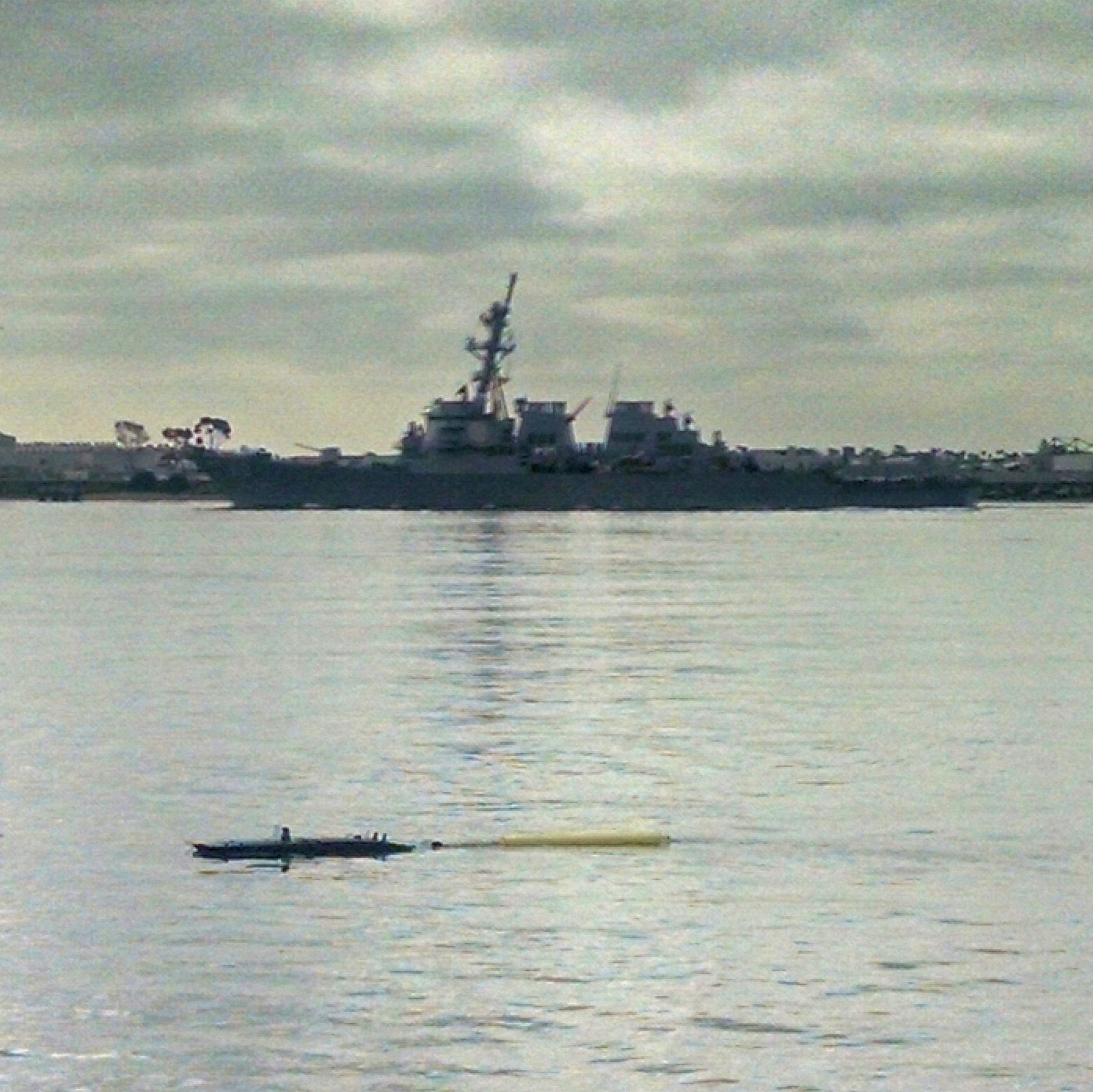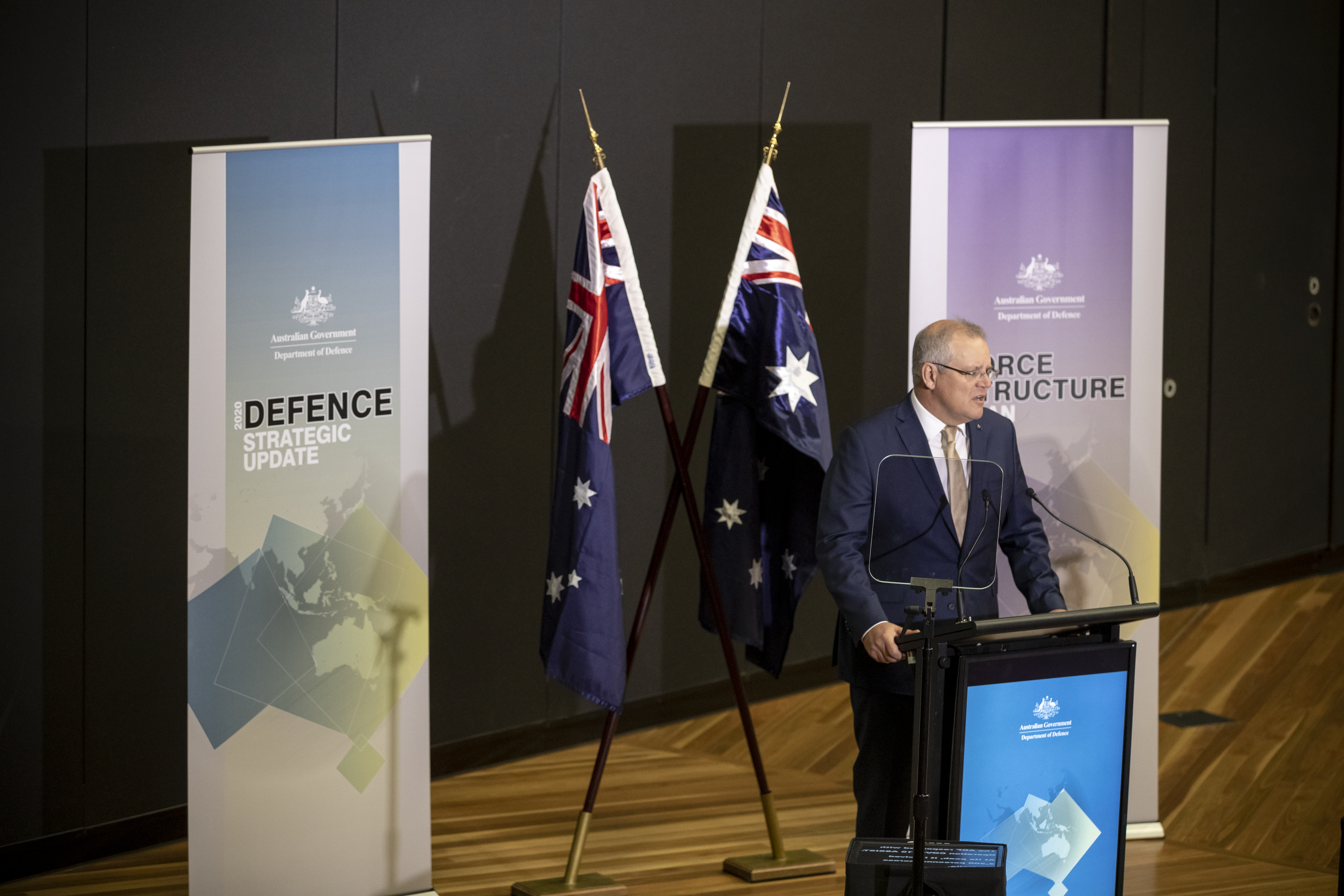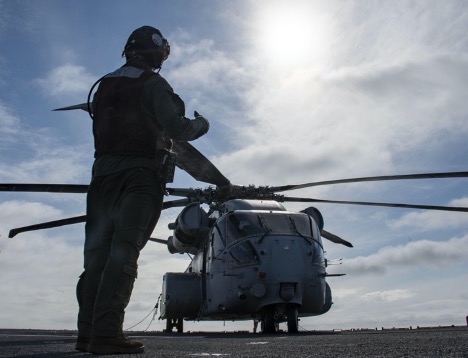By Robbin Laird
Nuclear deterrence is back on the agenda for NATO and the United States.
The buildup of the Russian missile arsenal, short, medium and long range, with clear violations of INF limitations are designed less to create a so-called anti-access and area denial capability than an arsenal designed to make the recovery of classic conventional deterrence seem beyond reach in Europe.
The anti-access and area denial bit is really about defending the Kola Peninsula, the largest concentration of military force in the world as well as the always-vulnerable “European” Russian area.
But with the gaping holes in European defense capabilities and the with the United States working to repair the focus on the land wars, there clearly is a major gap in a credible continental conventional deterrent force.
In this sense, the ability to combine hybrid warfare means, significant offensive strike missiles, and an ability to blend in low-yield nuclear weapons in the mix are designed to give the Russians flexibility in coercing European states.
With such an approach, how can European states, European NATO and the United States enhanced a credible warfighting approach, which can deter the Russians?
I looked at ways the United States might approach answering this question in an article which I published last year. There a dealt with a range of options facing the United States in terms of reinforcing nuclear deterrence within Europe against the Russian nuclear and missile modernization efforts.
But it is not just about the United States; but it is also about the European nuclear powers, Britain and France, and we have dealt with those dynamics of change in our forthcoming book, The Return of Direct Defense in Europe.
For a number of European states, they have participated for some time in a NATO nuclear sharing effort, in which those states arm combat aircraft with a nuclear weapon provided by the United States and have available a core capability which can be used in sync with NATO concepts of operations. The current NATO nuclear sharing policy is built around a policy whereby the United State forward deploys a small number of nuclear warheads which could be operated by non-American NATO assets in time of war. These non-strategic weapons would be deployed by dual capable aircraft (DCA) maintained by certain NATO allies, including Germany.
DCA aircraft are specially configured for a nuclear mission including special radiation “hardening,” to make their electronics more resistant to the electromagnetic pulse and other radiant energies associated with a nuclear explosion. Also involved, is special training for DCA pilots for the nuclear mission as well.
Germany faces a twin transition challenge with the coming retirement of its Tornado aircraft. On the one hand, there is the platform itself; on the other hand, there is the nuclear mission which that aircraft currently delivers for Germany.
Of course, Germany could simply walk out of the nuclear sharing NATO effort, and replace Tornado not as a DCA but with a single conventional only platform.
But as Rafael Oss noted in an article published by the European Council on Foreign Relations on April 30, 2020:
Without dual-capable aircraft in its arsenal Germany could still contribute to the alliance’s SNOWCAT (Support of Nuclear Operations With Conventional Air Tactics) programme by having its non-nuclear Eurofighters escort allied dual-capable aircraft. It could also continue to participate in the high-level Nuclear Planning Group and related forums in which all NATO members apart from France confer on issues associated with nuclear forces.
But its influence on nuclear matters within the alliance, including arms control and disarmament, would diminish considerably.
The “détente” portion of NATO’s basic policy of combining deterrence and détente – traditionally of great interest to Germany’s political left – would lose an important champion.
The loss of Germany’s influence might even extend beyond the nuclear realm: the US, France, and the United Kingdom would be unlikely to continue consulting with Germany in the informal Quad group if it is unwilling to share either the financial or the nuclear burdens of collective defence and deterrence.
Germany abandoning its dual-capable aircraft could even mark the beginning of the end for nuclear burden sharing in NATO.
Public opinion in the three other countries that contribute dual-capable aircraft to the nuclear mission – Italy, Belgium, and the Netherlands – is even less enthusiastic about nuclear deterrence than it is in Germany.
If Germany were to quit, such allies may eventually follow suit. In turn, other NATO members with more favourable views of nuclear deterrence, like Poland or Romania, might seek bilateral agreements with the US to satisfy their security needs.
Either way, the alliance’s deterrence and defence posture would become even more beholden to Washington.
Finally, failure to replace the Tornado could affect the future of arms in Europe. Cold war arms control was not driven solely by moral concerns, but also by practical considerations centring around particular weapons. As the international arms control architecture crumbles, Europeans rightly lament the ending of the Intermediate-Range Nuclear Forces Treaty and the less-than-certain future of the New Strategic Arms Reduction Treaty.
But moralistic arguments alone will hardly entice Russia to the negotiation table. Without forward-deployed US nuclear gravity bombs and European dual-capable aircraft to carry them to their targets, NATO would have much less to offer in exchange for Russia’s estimated 2,000 tactical nuclear weapons.
But what then are the options to replace Tornado DCA with another aircraft?
The first and most obvious choice is the F-35.
This is the aircraft which the United States and a number of European allies who participate in the nuclear sharing mission will use moving forward in the decade.
In an article which I wrote in 2017, I laid out the way ahead with regard to the F-35 and nuclear deterrence.
There is much to be said for such an option for Germany, and two former Luftwaffe air chiefs provided a hard-hitting case for acquiring the F-35 in part for this mission set.
But Germany chose for defense industrial base reasons to not go down this path.
Its decision was to pursue the Future Combat Air System program with France which is designed to replace Eurofighter and Rafale by 2040.
This means that either one simply does not replace Tornado, or argues that Eurofighter can subsume Tornado functions and you simply build more of them.
Project Centurion for the RAF does subsume some of the weapons load outs on the Tornado for the modernized Eurofighter. And clearly, Germany can leverage the fruits of Project Centurion.
But the RAF is buying F-35 and not only that is a major stakeholder in the program, and working F-35s with Eurofighters as an air combat dyad.
The second option would be to develop a DCA Eurofighter.
For Germany, if they would remain a nuclear player, they would face the challenge of achieving nuclear certification of the Eurofighter in the United States. This would entail as well significant training for the DCA mission, also to be conducted in the United States.
Airbus made the case that the Eurofighter could be certified by 2025 which would meet the projected deadline for retirement of Tornado.
This was almost certainly an optimistic projection, but there remains a number of questions about the weapon to be carried at what altitude and what mission profile. The altitudes at which Tornados fly a nuclear mission versus the altitude at which Eurofighter would do so are so different the question would not just be one of certification, but of effective combat operations as well.
A third option, which purportedly the one taken, will be to buy Super Hornets for the nuclear mission and Growlers for the EW mission.
Recently, the defense press has asserted that the German government has approved a mixed buy of Boeing F/A-18E/F Super Hornets, EA-18G Growler electronic attack aircraft, and Eurofighter EF-2000 fighters for the Luftwaffe to replace its remaining fleet of 90 Panavia Tornados.
Even though the defense press has announced this, the German government has not. Even more to the point, Germany will see an election, a new Bundestag, a new Defence Committee within the Bundestag, and the ever-challenging budget process to sort through all of this.
Nevertheless, the prospect is an intriguing one and raises a number of key questions.
How will the German government play out its nuclear policy in the years ahead?
How will its new nuclear capable aircraft dovetail with those other members of the nuclear club in Europe who will be flying F-35s?
France is not part of the integrated nuclear club within NATO, but how will the German engagement mesh with any evolving French nuclear policy?
The Growler buy is interesting on many levels.
At the International Fighter Conference 2019, a senior Luftwaffe officer made it very clear that the EW mission was a central one for his Air Force.
At the same conference, Eurofighter made a splashy announcement of their EW build out of their aircraft. Obviously, the Luftwaffe preferred a flying aircraft to a briefing chart version of the Eurofighter.
What made the Luftwaffe go down the Growler route?
Then there is the question of partners.
The only force which flies the Super Hornet and the Growler other than the US Navy is the RAAF.
Might new partnerships emerge from the Luftwaffe operating the Growler, up to and included working on Australian training ranges?
The Eurofighter modernization is also interesting.
Much of the technology envisaged in the “new” version of the Eurofighter already exists on the RAF’s aircraft.
Does this presage a closer working relationship between the Luftwaffe and the RAF in shaping the evolving Eurofighter fleet, up to and including participation in Tempest?
And Germany and project Tempest is interesting to think about, for the project is more about leveraging 4th/5thgeneration aircraft and shaping the way to 6th generation than building a new fighter.
And with SAAB’s as well as the Italian’s participation in the project, this looks more like a renovated Eurofighter coalition than anything else.
And then what are the implications then for FCAS?
At a minimum, the Germans would expand their options and enhance their position vis a vis the French in shaping a way ahead for 21st century air combat.
Other questions are posed by one user of the Super Hornet, namely, the RAAF.
Former Chief of Air Force, Air Marshal Brown has highlighted that the shift from the Hornet to the Super Hornet was a significant one as the RAAF was faced with the challenge of handling securely a data rich aircraft.
Working through those security and data managing aspects of the aircraft could provide a useful learning curve for the Luftwaffe going forward.
And Brown provided another interesting aspect of where the learning curve might help the Luftwaffe as well.
“With regard to the Growler, it is not about flying with the F-35 as far as the Growler is concerned, for the F-35 clearly does not need it; but the Growler can be and will be used in many other situations. Also a two-seat aircraft has the advantage of being able to evolve it’s roles to take far more advantage of second seat.
“We do not need pricey UAVs, which look like manned aircraft; we need cheap expendable assets. And the Super Hornet as a two-seat aircraft can evolve into a good asset to launch and control such assets, or to command assets launched by other aircraft as well.”
The projected dual buy of Super Hornets and Growlers could have impacts on other German procurement decisions, notably, the Pegasus versus Global 6000 options. Northrop Grumman is the prime contractor for Pegasus, and also the key provider for the EW systems onboard the Growler. Presumably, there would be synergy between Growler and Pegasus which could be leveraged.
And historically, Luftwaffe EW operators have trained with the US Navy at NAWDC. In my recent interview with CDR Brett Stevenson, the Commander of HAVOC, we discussed the potential German acquisition of the Growler as well. I would like to say, the CDR reminded me, but if you do not know a fact, you can be reminded of it, that the Germans are long standing partners with the US Navy as well in EW. The CDR noted that there is a long-standing exchange officer program with the Luftwaffe at VAQ-129, the Growler training squadron. This means that UK and German legacy EW training via Tornado plus the Australians would add up to an EW coalition being trained in the evolving and developing 21st century approach to EW.
Given that both Triton, and Growler are key stakeholders in the way ahead for fleet ISR and tron warfare, German operators of Pegasus and Growler could almost certainly be part of the US Navy reworking its EW/ISR/CR concepts of operations.
In the increasingly focused effort on integratability, no platform fights alone.
This why ANY platform decision must be considered from its impact on the evolving capabilities for the future fight; and not just on a stove-piped short-term solution.
Featured Photo: A German air force Tornado from the Tactical Air Force Squadron 51, Schleswig Air Base, Germany, breaks away from a KC-135 Stratotanker from the 100th Air Refueling Wing, RAF Mildenhall, England, after receiving fuel over Germany, April 29, 2020.
RAF MILDENHALL, SFK, UNITED KINGDOM
04.29.2020
Photo by Tech. Sgt. Emerson Nuñez
100th Air Refueling Wing Public Affairs





